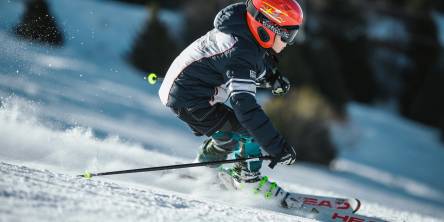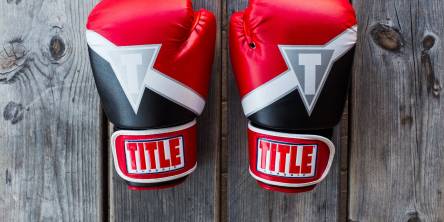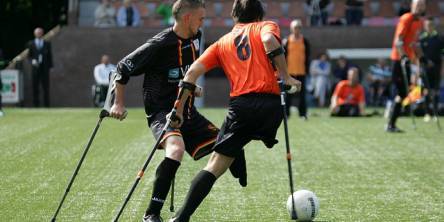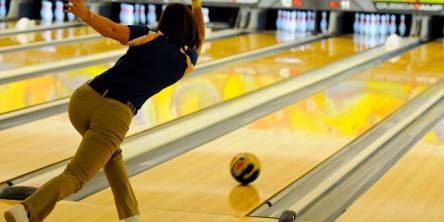The Mechanics of a Baseball Swing
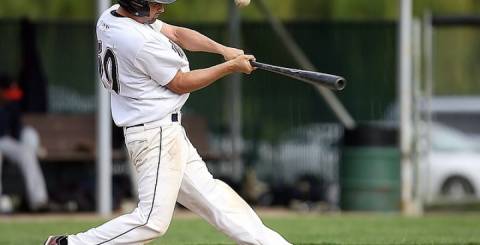
Pop 'n glide, pop 'n glide, see the ball before you stride!
That little mantra is nearly as old as the game of baseball itself. I first heard it nearly 40 years ago, when I was playing American Legion ball. Rick Collier, our star hitter, used the expression and it propelled him to hitting success nobody had ever seen from him before.
As I've been lucky enough to continue to play competitive baseball (hardball) into my 50's, in a league amongst my peer group, the "see the ball" part of the above expression, now is all I think about. While it doesn’t hurt to start with one of the best baseball bats, after that keep it simple - the better look you get at the ball as it comes out of the pitcher's hand - the faster you'll know whether it's a pitch you should swing at, or not. Because the mechanics of a baseball swing start, first, by knowing the strike zone, enabling any player to develop a good eye while in the batter's box.
In a league like ours, it's more likely to see erratic pitching, particularly on weaker teams that sometimes just have to send a live body to the mound - a thrower as opposed to an experienced pitcher, who has control and knows how to set hitters up to get them out. So, if your hitting against a thrower, bring patience with you to the batter's box.
If you're hitting against a legitimate pitcher who throws strikes, you can go to the plate with a little more aggression in mind, knowing you'll see strikes early and often.
This attitude, for example, helped Tony Gwynn to major success in his career, particularly against the 350-game winner, Greg Maddux. He knew Maddux had pinpoint control, and thrived on getting many hitters to swing early in the at-bat, often pounding his changeup into the dirt for easy outs. But Gwynn, using a less is more philosophy, was a skilled enough batsman to hit a soft line drive over the left side of the infield, or a grounder that often would find the "five-and-a-half hole", as Gwynn likes to say, between the third baseman and shortstop.
But back to the mechanics of the swing. First, regardless of the type of hitter you are, think about hitting the ball where it's pitched. Every hitter benefits from this approach - inside, pull it to your side of the field, down the pipe, hit it up the middle. Outside corner - hit it to the opposite field. If a hitter can develop rhythm like this, particularly during batting practice, it will help during a game, by making it less likely that the hitter will jump at a pitch, or become too anxious and pull off a pitch. This obstacle to hitting the ball hard is what baseball broadcasters are referring to when they say the hitter is "flying open."
This is accomplished by staying back and relaxed in the batter's box, and just meeting the ball when it's in the strike zone in front of the plate. And keep your swing simple. Every hitter (with Hall-of-Famer Paul Molitor seemingly the only exception I've ever seen), needs a mechanism to trigger their swing. A short, compact hitting stroke is accomplished by making sure your front shoulder is tucked tightly toward your back shoulder, in your stance, as you wait for the pitch to be delivered. This will cut down the backward rotation of the front shoulder - the trigger's time to start the swing and help the batter hit that fastball, out in front of home plate. If you're still late on the heater, make sure the bat, while in the hitting stance, is on an angle, at least a little parallel toward the ground, instead of straight up from the ground at a right angle, again to save time between the start of the swing, and contact with the ball.
Most hitters want to hit a fastball, while ahead in the count. When the count gets to two strikes, it's important to protect the plate, meaning if a pitch is near the inside or outside corner, try to foul it off and keep the at-bat alive. And keep the hands back on the curve, or other off-speed pitches. That will enable you to foul those slower pitches off or put them in play when the count gets to two strikes. Seeing the different rotation, just after an off-speed pitch leaves the pitcher's hand, makes it less likely the pitch will fool the hitter and cut down the chance of chasing a pitch that breaks out of the strike zone.
As for the stride, if you are the kind of hitter that stands in the batter's box with your feet at shoulder width, either pick up or twist your front foot straight up as you start your swing, to protect against overstriding, or if that's uncomfortable for you like it is for me, just stride a few inches forward. If you are overstriding, something that when it's happening can be seen by your footprints in the batter's box dirt, widen your stance out past shoulder width, as I have done for the past several years. A left-handed hitter with a wider stance has a better chance against tough left-handed pitching and stays with a curve breaking away. Hit it to the opposite field - where it's pitched - after the break.
So see the ball... a mantra echoed not only in their precision on the field but also in the unique baseball trading pins that symbolize their shared passion and camaraderie.
Similar Articles
As a fitness app development company, it is crucial to know the best practices to ensure the highest quality of healthcare apps. Here are the six best practices.
We have all noticed for some years, that after the return of the nineties fashion, the tracksuit has become the essential par excellence, to show off on (almost) all occasions.
If you’re serious about sports, then you know that injures are part of the package. Possible risks and injuries vary from sport to sport and can happen for several reasons, such as not being regularly active, not warming up properly and taking part in contact sports.
Boxing is a form of recreation which is quite famous. Its vast popularity and the recurrent interest developed around it can be attributed to the uniqueness that it offers and also to the fact that not every person can indulge in this sport.
Who doesn’t know that wheels are one of the essential parts of the skateboard? The choice you make while selecting skateboard wheels and bearing goes a long way when it comes to determining how fast you want to go on a skateboard.
Adulting can be stressful and tiresome. Sometimes a grown-up has just got to get away and let loose, and a great escape found by many fortunate adults is motorcycling. Motorcycling is about experiences and freedom on the open road.
More and more often we see, on TV, on social media, disabled athletes and this is a great way to make people understand that in this case disability must not be a limit, but that everyone can practice healthy sport, to feel better with themselves.
The hot weather is just around the corner and you have made the decision that you want a swimming pool. It goes without saying that you want a quality job, done by a reliable pool contractor. But where do you start?
Bowling is no rocket science. But if you learn a few standard techniques you should be able to master it quickly. Here are a few basics you need to know if you are a bowling enthusiast:



